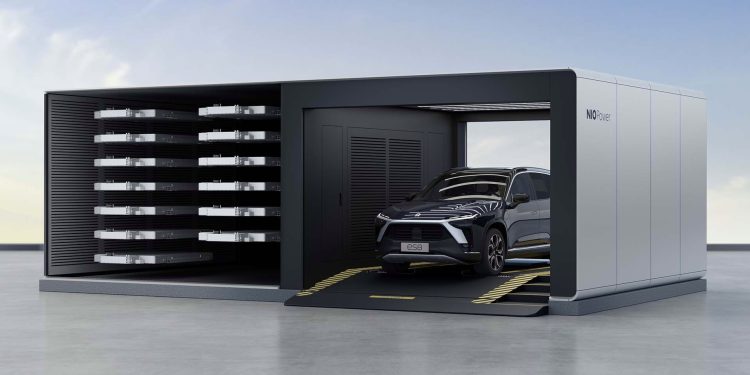EV Torque – to charge or swap?
Words: Mark Gilbert
Just when you thought we were on our way to standardised charging infrastructure around the world, it transpires China is doing things a little differently.
Forbes reports that all Chinese automakers are now offering electric vehicles compatible with battery swapping services.
What is battery swapping? Well the answer is self-explanatory. This is a re-charging solution that sees EV drivers pull into purpose-built swapping stations to have their depleted battery swapped for a fully charged one.
The main player in China is NIO, the EV manufacturer established in 2014 by Chinese tech billionaire William Li. NIO will sell customers their flagship model, the ES8 SUV, without a battery. This can cut up to $NZ25,000 off the vehicle’s $NZ110k purchase price. Nio then sells customers a ‘subscription’ to its Battery-as-a-Service (BaaS) scheme, for around $NZ280 a month, allowing customers as many swaps as they need. NIO’s process is fully automated, the car even reversing itself into place inside the station before the machines remove the battery from underneath it, and slot in a charged one.
There are significant advantages to this swapping concept. For drivers, the key benefit is that it speeds up the time taken to recharge an EV. Battery swapping can be done in comparable time to what it takes to fill an ICE-powered vehicle with petrol, i.e. five minutes or less.
Leasing also means that the owners of older cars get access to newer batteries or evolving battery technologies, and don’t have to worry about degradation or warranties.
There are environmental benefits too. Battery life can be extended, perhaps by up to four times, through optimal charging and battery care. Additionally the stored batteries can be charged off peak but delivered to clients whenever they have demand. Having centrally owned batteries could also make recycling easier.
Forbes reports that Chinese automakers NIO and Geely, battery swap developer Aulton and state-owned oil company Sinopec, plan to establish 24,000 swapping stations across China by 2025, compared with about 1400 now. The Chinese commitment to swapping has been heavily backed by the government with subsidies.
NIO plans to continue that expansion beyond Chinese shores into Europe (Norway already has NIO swap stations) and then the US. There is some debate about whether this charging solution will take hold in the rest of Europe without heavy government subsidies.
Battery swapping has been attempted before. Tesla tried and disbanded its pilot scheme around 2014. In 2007, Better Place was established in partnership with Renault to offer the service in Denmark and Israel. It filed for bankruptcy in 2013. That business was bedevilled by the huge cost of owning a stock of very expensive batteries and a complex consumer offering.
To make battery swapping truly economic there will need to be standardisation amongst automakers. It’s not just the battery that will need to be a similar type, size and weight, but it will need to be located in the same place in each vehicle, with the same cooling systems and connectors.
Whether or not automakers can agree on this universal standards is a big IF. VW, BMW and Mercedes are non-starters so far, as they see their own battery technology as part of their brand value.
Some European OEMs are dabbling, however. Renault is looking into it again, and MG has just released their new MG4 in the UK with a swappable battery. Additionally, InfraMobility-Dianba plans to establish the first European-owned battery swap station at Berlin’s BER airport. The first target group will be taxis.
However, if battery swapping becomes entrenched in China, then European and American car manufacturers might choose to make their vehicles compatible with battery swapping for the enormous Chinese market. This theoretically could unlock the concept in Europe.
Industry commentators are not all aligned on whether swapping will take hold, as a breakthrough in fast charging or battery energy density could well spell the end of it. However, in the short term at least battery swapping will continue in China. It’s definitely something for us here to keep an eye on.





